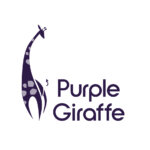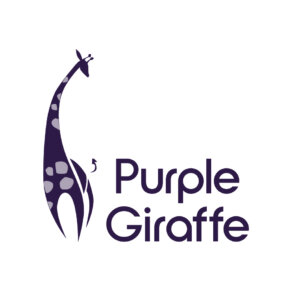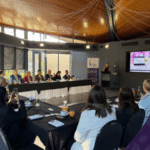We live in an age where everything is online, from social media ads to email newsletters and search engine optimisation. Although, despite the dominance of digital, traditional marketing is making a quiet comeback. As digital platforms become increasingly crowded and competitive, more businesses are rediscovering the power of traditional marketing to cut through the noise and create a memorable, real-world impact.
Traditional marketing isn’t outdated; it’s just being redefined. When used strategically, it can complement and strengthen digital campaigns, especially when businesses want to build trust, increase visibility, or reach audiences who value physical connection. In today’s environment, where attention spans are short and screens are saturated, old school marketing is proving it still has a strong place in a modern society.
What is traditional marketing?
Traditional marketing refers to any form of promotion that doesn’t happen online. This includes television and radio advertising, print materials such as flyers, brochures and magazine ads, billboards, direct mail, in-store signage, event sponsorships, and even branded merchandise. These channels have been around for decades, and while they might seem old-fashioned compared to their digital counterparts, their reach and influence can still be highly effective. Traditional marketing focuses on building broad awareness, brand recognition and emotional connection, often through repetition and real-world visibility. Rather than targeting individuals based on specific data like digital platforms do, traditional marketing tends to target larger, location-based or interest-based audiences. That might mean promoting a product through a radio station that your local community listens to, distributing postcards through letterboxes in your neighbourhood, or placing a banner at a high-traffic event.
What are the functions of traditional marketing?
As its core, traditional marketing still serves the same purpose it always has, to communicate the value of a brand or product and influence purchasing behaviour. What has changed is how it fits into an increasingly fragmented media landscape. One of the key strengths of traditional marketing is reach. For example, a local newspaper ad or a highway billboard can reach thousands of people in a single day without relying on algorithms or screen time. This kind of visibility can be beneficial for brand awareness campaigns, product launches, or community-focused businesses.
Another function of traditional marketing is credibility. Seeing a brand featured in a respected magazine or on television still carries weight with many consumers. It can signal that a business is established, trustworthy and confident enough to invest in major channels. This is especially true for older audiences, rural communities, or industries where face-to-face engagement still drives decision-making. Traditional marketing also creates physical touchpoints. Holding a beautifully designed flyer, receiving a handwritten postcard, or seeing a branded banner at a local event creates sensory and emotional impressions that digital ads often can’t replicate. These tangible experiences can leave a lasting impact and help brands stay top of mind long after the initial interaction.
How does traditional marketing fit in the digital world?
While digital marketing offers precision and trackability, it doesn’t always offer depth. That’s where traditional marketing comes in, not to replace digital but to support it. The most effective brands today don’t choose one or the other. Instead, they blend traditional and digital tactics to create a more complete, connected experience.
A local café might use Instagram to showcase daily specials but also drop a printed loyalty card into each takeaway bag. A wine brand might launch a digital campaign targeting online shoppers, while also investing in in-store displays and branded tasting events. These integrated approaches meet customers at different touchpoints, both online and offline, and help reinforce brand messages. Traditional marketing also plays a vital role in standing out. As more businesses compete for space in the digital landscape, traditional channels are less saturated, which makes them more noticeable. A thoughtful piece of direct mail can feel more personal than another email in a crowded inbox. A print ad in a niche magazine can resonate more deeply than a fast-scrolling social post.
Another advantage is accessibility. Not everyone is active online or trusts digital platforms. For businesses trying to reach older demographics, remote communities or audiences with lower digital literacy, traditional marketing is still the most direct and effective route. Finally, traditional marketing can amplify your digital efforts. A QR code on a brochure can drive traffic to your website. A branded tote bag can spark curiosity that leads someone to look you up online. A radio campaign can encourage people to follow you on social media. When aligned with your digital messaging, these real-world assets create a seamless brand experience that boosts recognition and recall.
Bringing it all together
In a world that feels increasingly digital, traditional marketing is not fading, its evolving. It’s being used more intentionally, more creatively and more strategically than ever before. At Purple Giraffe, we understand the value of both worlds. We help businesses develop integrated marketing strategies that build trust, generate impact, and meet customers wherever they are, whether that’s online, in print, at events or in the local community. Traditional marketing still matters and when it’s combined with the power of digital, it can elevate your brand in ways that neither channel can achieve alone.
If you’re ready to create a marketing strategy that blends the best of both, we’re here to help. Let’s bring your brand into the spotlight, online and offline.







